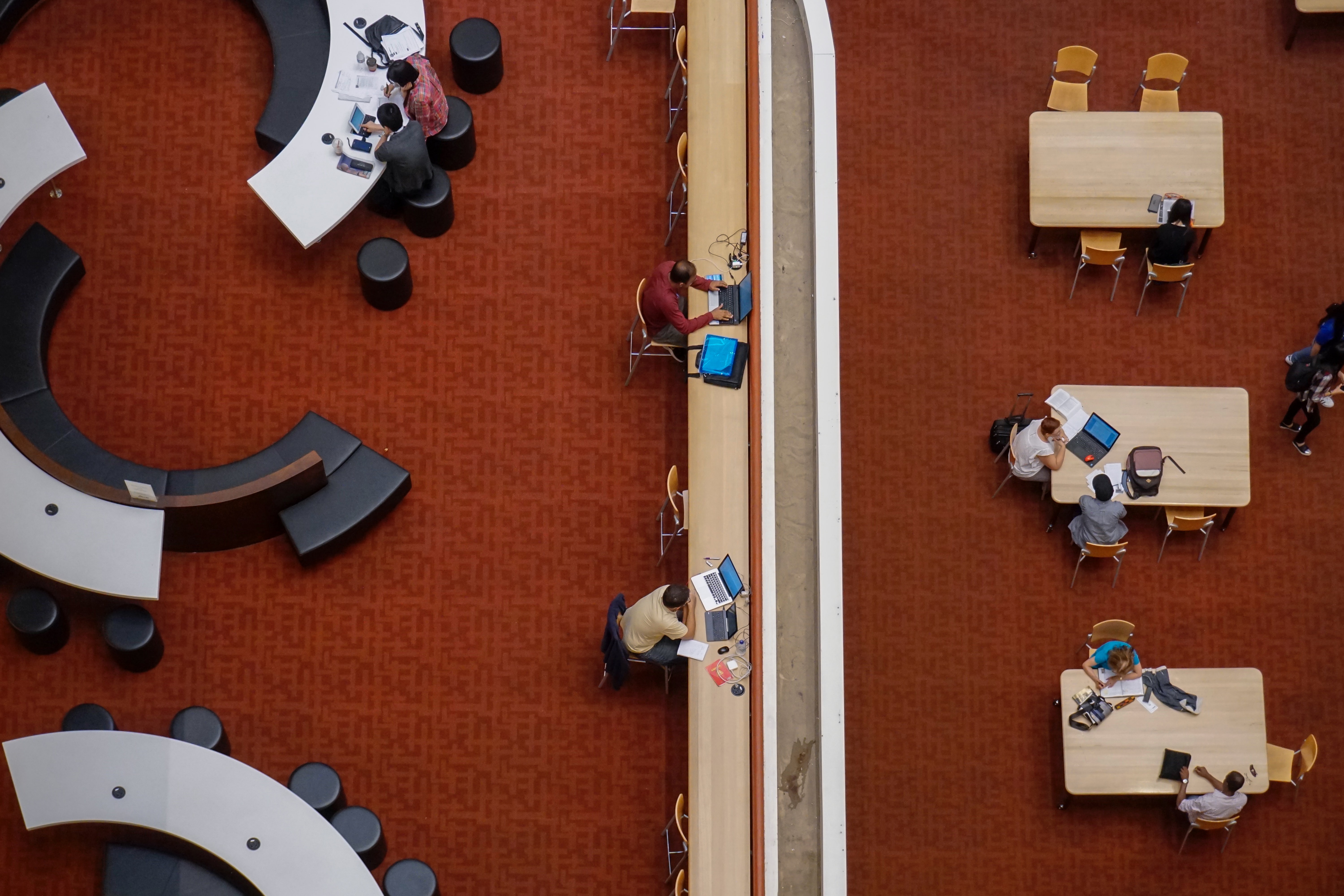 BIG DATA
BIG DATA
 BIG DATA
BIG DATA
 BIG DATA
BIG DATA
Chris Lord relates the story of a space planner at one higher educational institution who faced a conundrum: Plenty of square footage had been allocated for study space, but students were complaining that there weren’t enough places to sit.
Both sides were right. The university had equipped the space with large trestle tables that seated six people, but it turned out that if just one person was sitting at a table nobody else would. The solution: Place houseplants in the middle of the table to divide the space and create a perception of privacy.
In short, the space plan looked good on paper but didn’t account for human behavior. That’s a bug Boston-based Lambent is hoping to fix.
Thanks to mobile phones, smart cameras and Wi-Fi, it’s now possible for organizations to gather fine-grained anonymous data about how space is used to inform smarter planning decisions. Lambent, where Lord is chief technology officer, is out to apply machine learning to the process.
There’s plenty of room for improvement. A recent survey the company conducted found that 75% of space planners believe people ask for more space than they need and 90% of senior leaders say they don’t have the data they need to make smart decisions about space planning.
“It’s not about reducing the amount of space that we have,” Lord said. “It’s about making sure that that space fits what employees or students need from it.”
Lambent, which is the business name of Armored Things Inc., shifted its strategy from public safety to data-driven space planning in the wake of the pandemic. Launched in 2017, the company initially set out to apply analytics to crowd control but it discovered that the bigger opportunity was in the more prosaic area of helping businesses create more efficient workplaces.
“It’s the same core technology under the covers, but it is now being applied to a very different set of problems,” Lord said. “People who manage spaces need more than just an understanding of how many people are in an area. They need to understand how that relates to how that space is used.”
COVID-19 complicated the picture. Businesses and universities have struggled to understand what the long-term impacts of social distancing and remote work will be on the workplace. Lambent’s survey found that 86% of corporate space planners believe managing a return to work has been a challenge.
Failure to gather data creates inefficiency and waste. For example, businesses often allocate ample space for conference rooms but don’t check back later on how that space is used. “They need to look at how many people are in the conference room relative to capacity,” Lord said. “If people are popping in just to take a phone call, then that’s an ineffective use of space.” A better solution in that scenario would be to install small phone booth-like spaces where one or two people could take a call.
Lambent is applying machine learning to analyze data culled from devices that permeate the workplace and passively track the whereabouts of people. “It’s about taking those small signals sprinkled across the space, fusing them together and turning them into that big-picture understanding of how many people are there,” he said.
Lambent says one university customer used the platform to analyze its use of centrally scheduled instructional computer labs and determined that nine of the labs could be replaced by virtual learning experiences, saving $2 million in rent over the next several years.
Machine learning can make intelligent predictions about where people are even if their devices aren’t visible. “You can infer where people are based on where you’ve seen them in the spaces where you have coverage,” he said. “The data comes from instrumentation that lives in the environment already. We call it ‘dark data’ and in most cases, nothing is being done with it.”
Analytics can not only improve space efficiency but influence workplace practices. For example, knowing that people are more likely to come into the office for meetings rather than to work at a desk can guide decisions about how to allocate collaboration space. Empty offices on Mondays and Fridays caused by people extending their weekends may prompt a company to offer incentives such as pizza parties on those days.
“The more advanced customers care about pulling people into the office, giving them a reason to come in” and not demanding what days they should be there, Lord said.
Simply observing behavior or scrutinizing conference room reservations can be misleading. “Using poor signals is going to inform the wrong actions,” he said. “You know that the conference room was booked, but not if it was booked for the capacity it can handle.”
Lambent says its platform aggregates data across a portfolio of spaces the organization controls and pulls it into a single view that can be filtered across time periods, space types or tags to make it easier to track the metrics that matter.
The most advanced companies are rethinking the whole idea of fixed workplace design, Lord said. “They want to get to a point where spaces are not big capital assets that you invest in once,” he said. “They are malleable depending on what you need this month or this quarter and what the teams and the projects demand.”
THANK YOU